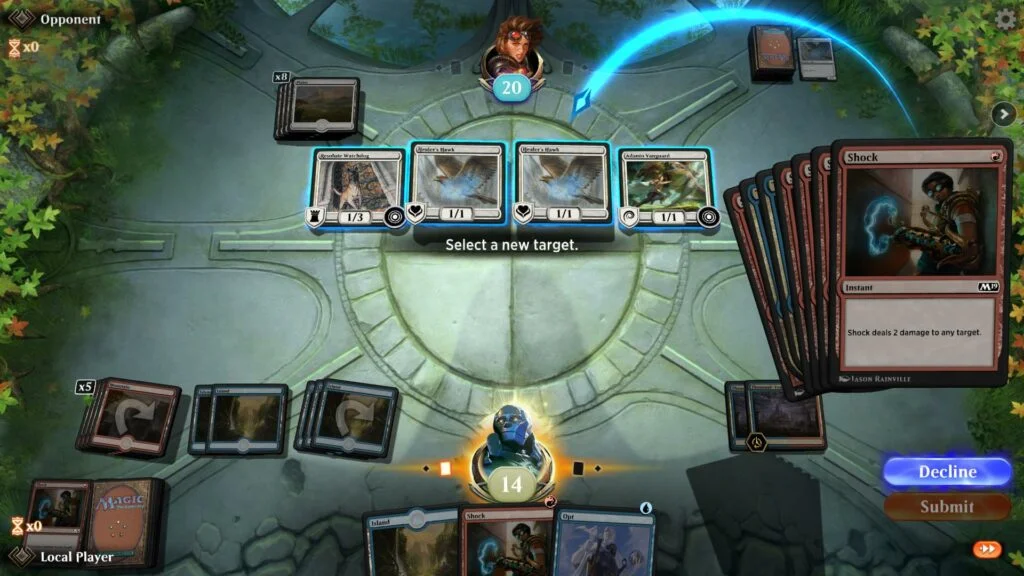ReadinG Blog #3: MTG Arena
- Alexander Sellers
- Dec 5, 2022
- 3 min read
I was contemplating making another 'high' art blog post about a digital art piece as we near the end of the semester, but I realized that at this point, digital artwork has suffused so much of all our own ongoing life experience that it would be a shame not to make some light of this.
Part of what I mean is that one cannot go a full day without interacting with at least some kind of digital work, be it an animation or some other pixelated work on adveritising boards, tv's, websites, and video games. To be honest, I wanted to offer a critique of just how much brightly lit, highly saturated, over-the-top content there now is online as elsewhere, but this itself seems an outdated critique. The attention economy demands its own kind of movement. How much 'art' has to offer as commentary, as relief, or as contribution to the digitification of life can itself be digital, too, of course. For digital artists, like any artist, have the potential to pass comment on what it means when a medium finds a new way to obfuscate its own essence.
In any case, to come down a bit - what I do really worry about, in a future where I myself spend at least 5 hours per day staring at a screen - are the changes to the retina and the optic nerve in our skulls. I'm already experiencing more migraines than I did as a teenager, and the fact of the matter is that a coding/fx career which some of those my age might lucratively pursuing seems impossible for me - and not particularly desirable either. And yet, I spend days on end also staring at the screen, both for my own research work and for my own pleasure.
Anyways, all of that is preamble to talking about a particular experience of how digital artwork approaches traditional paper media and changes our sense of the medium itself. In this case, I wanted to point out one very popular paper/cardboard game, called Magic the Gathering. Since beginning to play the online version some time ago, I began to notice several VFX animations integrated into the rarer cards as part of the game. They look like this:
The game is basically a fantasy-based deckbuilder/card-game duel, and so MTG Arena (the online version) tries to bring several cards that fire-breathe, attack, or otherwise come to life over the board. The mix of trying to recreate card/hand dynamics as if you were really sitting there and these brief creature animations are a bit strange, but then I think collecting paper cards is itself an even more bizarre, fetishistic practice anyways.
I researched a bit of the FX team involved in arena, and stumbled on this webpage, from one of the content creators: http://www.junglestudio.com/mtg-arena-vfx/
It's clear to me that a lot of thought has gone into each individual card doing something on screen. According to that studio page, these animations were created in Unity, 3Ded in Maya, and touched up with Photoshop.
I think the MTGA and its VFX team do a pretty great job making these animations very clean and appealing, while also referencing the materiality of a card or card image coming to life from a small spot on a board. Some of these cards also fit very well with the theme that comes from the paper fantasy story that Magic wants to tell.
Any critique, really, I might have to offer this kind of digital art work does not come in the form of design principles or how it might be improved, but rather that, like so much digital content online and in video games, this version of mechanical reproducibility, its repetitiveness and its reliability on screen and into our retinas contributes not just to a future full of migraines, but also to a future full of so many visual pleasures that make it so hard just to stop looking, again and again and again.










Comments